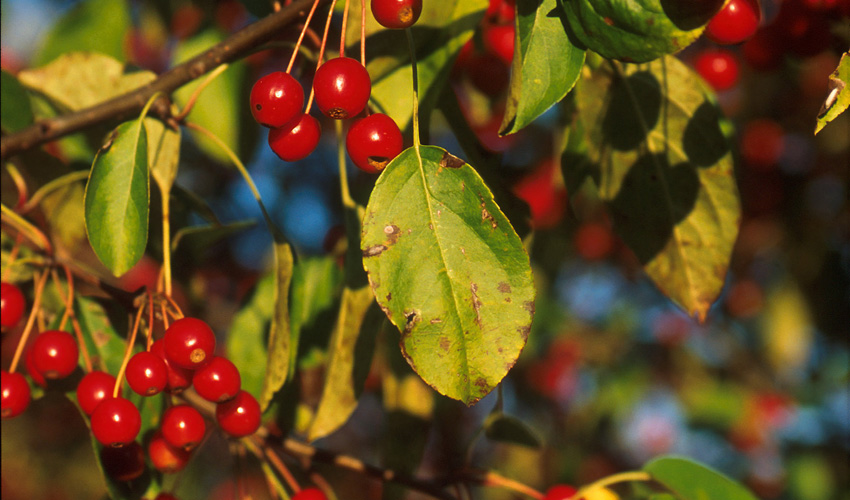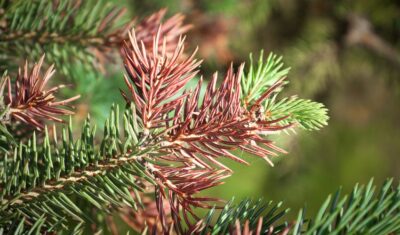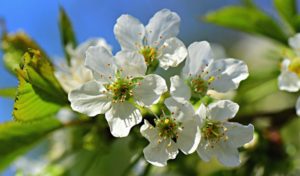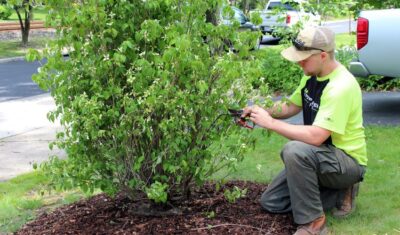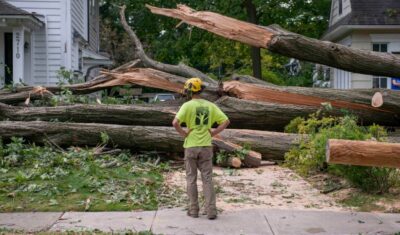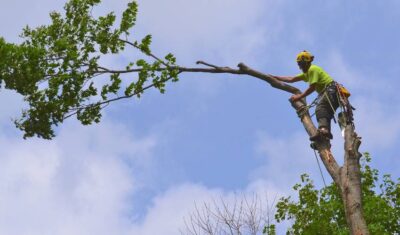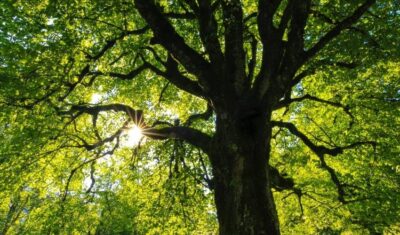If your apple or crabapple tree develops spotted and deformed leaves, and cracked fruit that drops early, it’s probably apple scab.
What is apple scab?
Apple scab is caused by a fungus, Venturia inaequalis, and is a serious disease of apple and crabapple (genus Malus) trees that spreads quickly and easily. Generally, you’ll first notice it in early spring, when rains, wind, and cool temperatures spread the fungal spores.
What are the symptoms of apple scab?
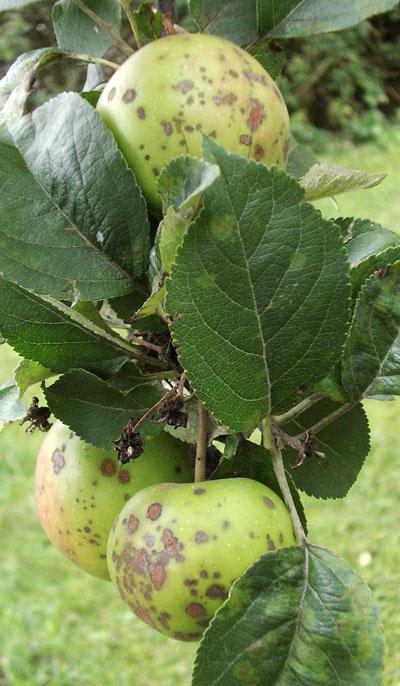
Apple scab on apples
You can identify apple scab by its characteristics:
- Circular spots are light brown and start to appear on fruit and leaves in early spring
- Scabs are sunken, up to ¾” around, dark brown, and make spores in their center
- Leaves and fruit are affected, often leaves around developing fruit, and at the blossom end of young fruit
- Deformed, twisted leaves
- Cracked skin on fruit
- Young fruit that is infected often drops to the ground early
- Mature fruit that was infected at harvest may develop apple scab in storage
HOW DOES APPLE SCAB GET ON MY APPLE TREES?
The apple scab fungus overwinters in fallen, infected leaves, and fruit that are left on the ground. From there, it easily spreads to nearby trees in early spring.
Here’s how it spreads:
- Cool, wet spring weather causes the fungus to grow to maturity, when it releases its spores
- Rain and wind carry spores, which land on apple leaves and fruit
- Wet leaves or fruit allow the spores to germinate and grow into leaf or fruit tissue
- Scabs begin to form within a few weeks
- Mature scabs produce more spores that are released into the air and readily transmitted by rain splashes and wind
The fungus can quickly multiply, spreading from tree to tree and infecting all susceptible trees in just one season.
DOES APPLE SCAB INFECT OTHER PLANTS?
There are several strains of apple scab, but each one is specific only to its particular hosts. All the trees and shrubs listed below are members of the rose family (Rosaceae), but are infected by specific strains of the fungus that don’t cross over to other genera.
Each of the following is infected by different strains:
- Apple and crabapple trees (genus Malus)
- Mountain ash (genus Sorbus)
- Hawthorn (genus Crataegus)
- Cotoneaster
- Pyracantha
A similar-looking but different scab infects pear trees (genus Pyrus).
WHAT SHOULD I DO IF I THINK MY APPLE TREE HAS APPLE SCAB?
First, you’ll want to make sure that it really is apple scab. If you aren’t certain, our tree care professionals can help you with identification and explain a treatment plan.
HOW DO I TREAT APPLE SCAB?
Once it’s been identified, apple scab can be treated on several fronts:
GENERAL PREVENTION MEASURES
- Choose scab-resistant varieties of apple or crabapple trees.
- Rake up and discard any fallen leaves or fruit on a regular basis, and never leave fallen leaves or fruit on the ground over winter. Apple scab fungus overwinters on fallen leaves and fruit.
- Prune your apple and crabapple trees to keep their crowns open so light and air can move through. Dry leaves and fruit help to prevent initial infection.
- Plant your apple and crabapple trees correctly, in full sun and with enough space around each tree, according to their mature size. Shade keeps water from evaporating quickly, and crowded trees are more susceptible to the disease.
- Irrigate your trees in the early morning hours, and don’t use overhead sprays that will wet leaves and fruit. Dry leaves won’t host the fungus.
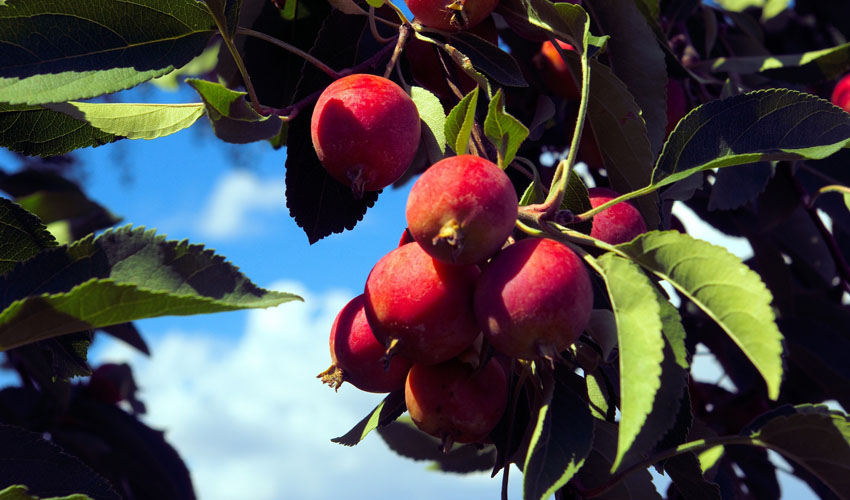
A healthy crabapple tree with several crabapples. Prevention is important when it comes to apple scab.
BEFORE INFECTION
- Spray fungicides regularly on emerging leaves and developing fruit to PREVENT apple scab. Sprays won’t work on existing apple scab, only as a preventative measure on uninfected leaves and fruit. If you have seen apple scab symptoms before on your trees, spraying young, uninfected leaves and fruit can prevent the disease from developing on healthy tissue.
- Dormant apple trees don’t need spraying for apple scab, as it’s the combination of wet apple leaves and fruit and the early spring temperatures that activate the fungus.
- Repeat preventative spraying for two years may be needed to make sure the disease is no longer present. Check the fungicide label, and monitor the weather to make sure you’re spraying effectively. Different sprays may have different schedules for repeat spraying.
- Check all spray labels for your particular apple or crabapple variety—some sprays treat only certain ornamental crabapples, for example, and not all fruiting varieties.
INFECTED TREES
- Follow general prevention measures, particularly cleaning up and removing fallen fruit and leaves.
- Monitor the early spring leaf and flower emergence closely on previously infected trees. You’ll want to spray these preventatively to break the cycle of infection.
PLEASE PROTECT POLLINATORS
Do not use an all-purpose fruit tree spray when your apple trees are blooming. These sprays contain pesticides as well as fungicides and kill honeybees and other beneficial pollinating insects!
We rely on honeybees and beneficial pollinators because we don’t have another way to effectively pollinate all the apple trees and the other flowering and fruiting trees we love and rely on for food. It’s everyone’s responsibility to help keep our pollinators local and healthy.
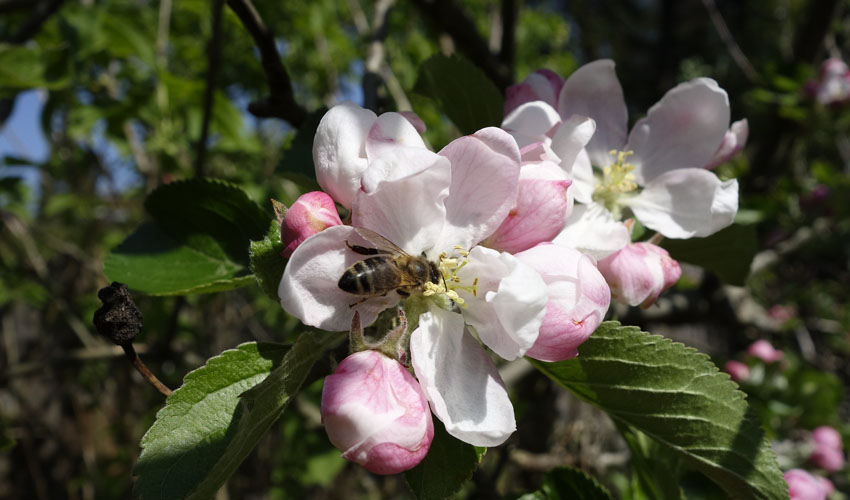
Using the wrong type of spray can injure or kill pollinators, which are important parts of our ecosystem
Remember: Apple scab is treated by the fungicide portion of an all-purpose fruit tree spray, not the insecticide portion, so a fungicide-only spray is all you need.
CHOOSE SCAB-RESISTANT VARIETIES
The best way to prevent apple scab is to start with resistant trees. These are the resistant varieties listed by Ohio State’s Agricultural Extension Service:
Apple varieties:
- Crimson Crisp
- Crimson Gold
- Enterprise
- Freedom
- Galarina
- Goldrush
- Jonafree
- Liberty
- Nova Easygro
- Novamac
- Priscilla
- Pristine
- Redfree
- Scarlet Prima
- Sir Prize
- Sundance
- Williams Pride
Crabapple varieties:
- Anne E
- Bob White
- Molten Lava
- Ormiston Roy
- Prairiefire
- Red Jewel
- Sargent, Sentinel
- Strawberry Parfait
- Sugar Tyme
You can find OSU’s lists of less-resistant varieties here.
IN SUMMARY
Apples and crabapples are valuable and beloved for their fruit and spring flowering, and keeping them healthy is important. It is also the responsible thing to do, as chances are that if you have apple trees your neighbors will also have apple trees. Since apple scab spreads so easily, treating your trees is an important way to keep it in check and to prevent infecting your neighbor’s trees as well.
Do Your Trees Have Apple Scab?
Schedule an assessment or treatment today to protect your valuable apple and crabapple trees.Recent Articles
Topics
About The Author

STAY IN THE LOOP
WITH OUR
LATEST UPDATES
"*" indicates required fields

